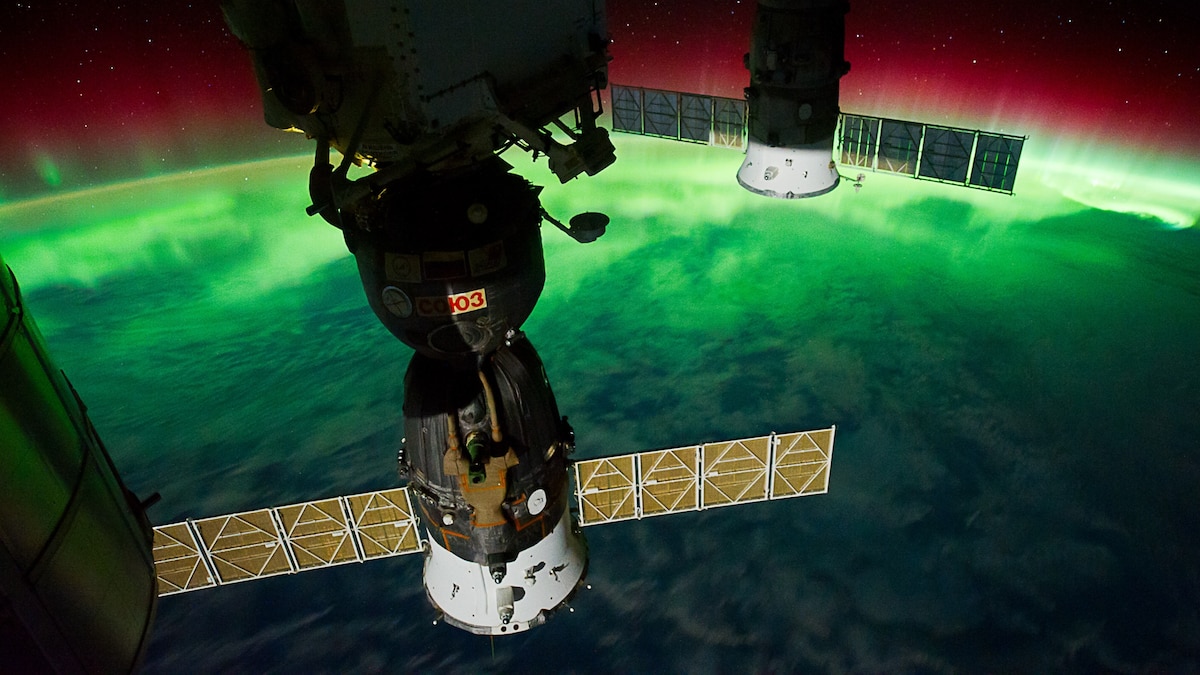That release often causes solar events like solar flares, which, in turn, are often linked to CMEs. When a CME occurs, forecasters input the observational data into a model to create predictions anywhere from one to three days ahead of a possible impact. They further refine the forecast when the solar wind passes through our satellites, and again as the CME impacts Earth. “We use magnetometers around the globe to get an idea of how strong the magnetic changes are that would relate to a possible geomagnetic storm,” says forecaster Shawn Dahl, SWPC’s service coordinator. “Our forecasts can change quite frequently.”
Why is aurora forecasting so difficult?
Imagine trying to forecast a storm that starts 93 million miles away, with only a few cameras to track it. That’s the challenge of aurora prediction.
Most of our space-weather satellites sit directly in the line of sight between the two, offering only a flat, one-angle view of solar eruptions. That makes it hard to gauge their actual size, speed, and direction. “Unfortunately, when one’s pointed straight at us, we can’t actually see its elongation and its extent, and so there’s a set amount of guesswork,” says Kerss.
Even the satellites’ positions work against forecasters. Most space weather satellites sit at Lagrange point 1 (L1), a gravitational saddle about a million miles away from Earth. The most crucial data does not become available until the CME hits this point—but that only gives forecasters about a 15- to 60-minute warning of the CME’s arrival. “We don’t have instruments lined up every five million miles towards the sun that would allow us to track something. We have to wait until the CME gets so close to Earth,” says Dahl.
Ledvina likens forecasting auroras to predicting a hurricane’s landfall in the U.S. from a few satellite images of the storm when it’s still off the coast of Africa—you only gain certainty when a buoy close to shore registers the storm.

